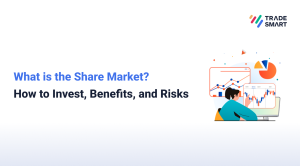
If you dwell in the stock market long enough, rumour has it you would come across patches of highs and lows. Now, you may be lucky and be able to completely dodge the lows, though no investor has ever been that lucky; but, without fail, you would surely hear of the bulls. And of the bears too!
The share market can be largely divided into two groups: the bulls and the bears. While there are rabbits and turtles and frogs and hawks too in the share market, investors, for the sake of simplicity, can be divided into two groups majorly, which largely encompass all the other categories. Their dominance also decides the market’s grace.
The bulls hit equity with their horns and send it flying right up in terms of prices, demand, buying volumes, etc. Bull investors are largely associated with optimism, zeal, confidence, and risk-taking.
On the other hand, a bear claws the equity down and it flops in terms of prices, but the selling volumes increase. Bear investors largely find themselves being analytical, patient, and in it for the long haul.
This is to define a bull market and a bear market.
However, there has to be more to it!
What is a bull market?
Usually, a bull run can last for several months or even several years, wherein the prices of equities grow beyond expectations and continue to soar. However, this concept applies to commodities, bonds, etc. as well. When there has been a consistent increase for a period of more than six months to be safe, it can be called a bull zone! However, the significant rise which counts as an “increase” here is 20% in the market’s cumulative.
Currently, we are in the middle of a bull jaunt.
Key indicators of a bull market
To understand how to spot a bull market, we must first guess what causes the bull market.
Prices of equities grow in a strong economy, with favorable policies.
This means a stable and smooth economic setup, low unemployment, and overall development leads to growth in stocks.
These three are also the strongest indicators of the bulls’ reign.
What is a bear market?
The bears are known to hibernate and sleep over the share market. Dreaded and despised, the bears of the market claw equities down. This leads to short-selling and losses. Their go can last for years too. When there has been a consistent drop in the market’s value amounting to or more than 20%, it’s the bear zone!
Key indicators of a bear market
A bear market is indicated by rising unemployment, inflation, and instability. All these factors also contribute to slower development, a weaker economy, and lower GDP. The GDP is high during the bull run but low during the bears’ reign.
The GDP of the nation is thus a significant indicator of the market.
Bull market vs bear market
Both have their utilities. While a bear market is nervously viewed, it has its own advantages. Ask Warren Buffet! He is known to be particularly fond of the bear. When the market slumps and the good shares flop, that’s when he picks them up. This method is also called the ‘value investing’ method.
It is when you pick these stocks at their lowest you make the gains at their highest.
While the bull market is always favored considering the wealth induction that it shows, the benefits are only for those who invested in the lows, not for the new joiners.
So, this isn’t a tug of war but a synergy. The Yin and Yang. The bulls and the bears.
Differences between bull market and bear market
We have prepared the following table to help you understand the basic difference between the bull market and the bear market.
Bull vs bear
| Bull | Bear | |
| GDP | Increases | Decreases |
| Buying | Increases in hopes of gains | Decreases, since a bear stint can go on for years and the buying price may come down sooner.
Although this is an ideal time to buy |
| Selling | Decreases in hopes of getting a better price | Increases, since investors panic and get anxious that equities may depreciate.
Although this is not the time to abandon your equities |
| Employment | High | Low |
| Equity Price | Higher | Lower |
| Market Sentiment | Positive | Negative |
| Demand for Shares | High | Lower |
| IPO activity | High | Lower |
Do keep in mind that the share market isn’t all mathematics and logic! It is largely sentiments. In the bear market, sentiments go south and even good companies with strong numbers and less debt can take a hit. The longer this negative psychology persists, the longer your window of making a purchase.
The same goes for bull markets too. Shares of even shallow brands with no claim to leading the game can also soar high. Thus, be careful when you are investing in a bull market. The zeal of bulls can keep toggling share prices high for a year or so, but eventually, the market does have a day of judgement when all the empty vessels get knocked hard on the ground.
Thus, it is advised to pick stocks for the bull season as well as the bear season. It has been found that FMCG stocks perform better during the bear season. Why? Because rising inflation means the most common items will be the first ones to get expensive. Similar trends can be observed in electronics, healthcare, power, to name a few. During the bull market, you would find the IT, Infra, and similar developing industries rising being the major employers and GDP contributors, it is naturally assumed that economic appreciation would not be possible without them.
Conclusion
We hope this article has helped you understand the bull market vs bear market. While no market is to be preferred over the other, we do recommend you not panic during a crash. This is the time to oil your gears and drive right in. Remember, patience is a virtue when dealing in the stock market.











